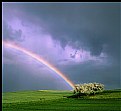
Chris Lauritzen
(K=14949) - Comment Date 5/13/2003
|
Tara,
Scanning negatives are harder to scan because of the latitude of print film. It does take a bit of fiddling to get the correct exposure. If you are running Nikon Scan software then try downloading a program called Vuescan www.hamrick.com. I also use the Coolscan 4000 and I have had better luck with Vuescan then the Nikon Software.
|
|
|
|

sean slavin
(K=3488) - Comment Date 5/13/2003
|
Here's another +1 for Vuescan. Great little piece of software.
8)
sean
|
|
|
|

Ramesh Kumar
(K=32) - Comment Date 5/15/2003
|
I use LS-4000. It's perfectly ok :-)
I would suggest Vuescan, it provides the option of selecting film profile.
Thanks
Ramesh
|
|
|
|

Tara Gregg
(K=0) - Comment Date 5/21/2003
|
I have Vuescan now. I haven't noticed a big difference yet but I'd like to do some comparisons between the Vuescan and Nikon software. Is it correct that you can pick a type of film in vuescan but there are no options when it comes to transparencies?
|
|
|
|

Chris Lauritzen
(K=14949) - Comment Date 5/21/2003
|
Tara,
You can pick both but tranies have fewer options.
|
|
|
|

Steve Green
(K=315) - Comment Date 5/22/2003
|
Tara
I too have a Coolscan 4000 and use Vuescan in preference to Nikonscan.
I personally find that the default settings for negatives in Vuescan give scans that are far too light, try changing them to around: Black point 1 to 2%, White point 0.5% Brightness 0.75 to 0.8. Play around with these settings until you get a scan that you like.
You really don't need different film settings for slide film as you're just trying to match the colours on the transparency, so as long as the scanner is set to give white for clear film all slides will scan pretty much the same. (In theory at least!).
|
|
|
|

Arjen VandeMerwe
(K=796) - Comment Date 6/14/2003
|
I have scanned mostly transparencies, mostly Fuji Provia 100F and 400F. I fiddle with the curves for every individual scan and then in PS adjust levels and often also curves. I found that I get finer grain with transparencies, but have not done a lot of testing with negatives. Can anybody here recommend a negative film for scanning? I would like to use negaqtive, for the greater exposure latitude, which will make it possible to regain a lot more highlight and shadow detail in contrasty scenes, by overlaying serveral scans of the same negative, some made darker, and others lighter.
|
|
|
|

Peter Carucci
(K=1672) - Comment Date 7/7/2003
|
I don't think your experience is so unusual, Tara.
I have to agree with Arjen here. I use a Polaroid Sprintscan 120 for both 35mm and medium format film.
I mostly use Fuji Provia for both sizes. In comparison with negative film, the color saturation is much greater, and the grain practically non-existent. As everone has pointed out, however, color negative film has a greater exposure lattitude.
I generally follow a similar workflow to what Arjen uses.
I've used Fuji 160 color negative film with success, but it is a lot more work to get a good print from a negative than a slide.
My scanner came equipped with Silverfast 5.5 by Lasersoft, as well as Polaroids own Insight Pro.
For scanning slides, I found the Polaroid software to be extremely capable, and easy to use.
The Silverfast was better for color negatives, but has a slightly steeper learning curve.
|
|
|
|
















